|
|
|
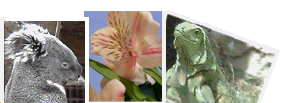 |
 |
PHOTOGRAPHY |
|
Photography has gone digital. However, much can be learned
about color mixing by understanding how the older color photography used
color film, transparencies, negatives and
photographic paper to produce color images. Most of these film
products were coated with color dye layers that act as filters to stop various
amounts of color light from passing through.
Since these color layers can hold back light passing through them, the
photographic process makes use of the "subtractive" system of color
mixing. It subtracts the colors out of the light that is reflected or
transmitted. |
COLOR PHOTOGRAPHY PAPER
How do the
color layers in a film photo form a full range of colors?
 |
|
| |
|
|
CYAN |
|
MAGENTA |
|
YELLOW |
The three color
layers are three photos of the same scene. The amount of color in each
layer matches the amount of each color of the 3 primary colors in the
original scene. The
cyan, magenta and
yellow layers subtract color from the light that you use to view the
photo. Since the layers are transparent, all three layers can be seen at
the same time.
Look at the image above. Notice that the
white
portion represented by the frost on top of the apple has no color in any
of the layers. What you see as white is really the
paper
backing of the photograph showing through, since no light is being subtracted
in that part of
the picture.
You can see that the green in the image
of the leaf is formed by the combined colors cyan and yellow in those two
layers. The red of the apple comes from the layers for magenta and yellow. If
all three layers had the maximum amount of color in each, then that area would
look black. All light would be subtracted (absorbed) in that case.
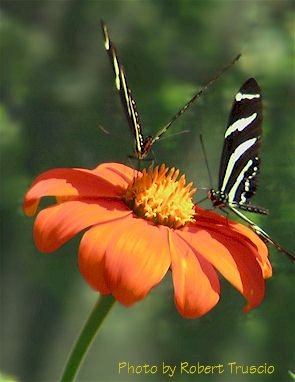 |
All other
colors are made by variations in the amounts of color in each of the three
layers. For example, each layer can range from a very deep
color to a very pale shade. Some photos may have many different
colors and shades of color. Some colors may be bold and others
hardly noticeable, but
there are still three basic color layers. |
|
|
|
NEGATIVE - POSITIVE
|
|
|
BLUE |
|
|
|
YELLOW |
|
|
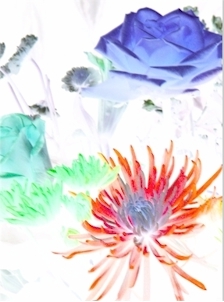 |
|
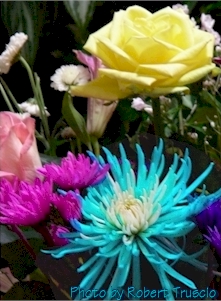 |
|
| |
|
|
GREEN
|
RED |
|
MAGENTA
|
CYAN |
|
When the colors of a picture are reversed, the negative
image that results produces opposite or complementary colors. The colors in a
color film negative are the opposite of the colors in the final photo paper
print. Notice that the flower that appears as red in the negative image is
actually a cyan flower in the positive photo. The flower that appears green in
the negative turns out to be a magenta flower. The flower that appears blue in
the negative is yellow in the photo. So once again we can see a relationship
between the red, green and blue of the "additive" primaries and the cyan, yellow
and magenta of the "subtractive" color primaries.
 (The
typical photographic negative film contains two additional color layers
besides the color negative image. These two extra layers form a "mask"
to correct for limitations in the color filtering properties of the
negative dyes when printed on photographic paper. It is this built-in
mask that gave film negatives their characteristic color which may
appear an overall orange to brown color.) (The
typical photographic negative film contains two additional color layers
besides the color negative image. These two extra layers form a "mask"
to correct for limitations in the color filtering properties of the
negative dyes when printed on photographic paper. It is this built-in
mask that gave film negatives their characteristic color which may
appear an overall orange to brown color.) |
|
|
|
|
DIGITAL PHOTOGRAPHY
Digital photography does not require film. It is a
photo-electronic process. Digital photos also utilize
a number of basic colors to produce a range of millions of colors. Digital
cameras mostly rely on light sensitive chips with filters that separate an image into its
basic colors for processing electronically. For the most part, cameras utilize
the red, green and blue colors of the "additive" primary colors.
|
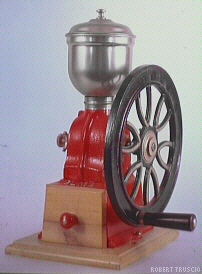 |
Digital photography can be displayed electronically on
screens and monitors. These screens and monitors most often use the "additive"
primary colors of red, green and blue.
Digital photos can also be printed out on paper using a color
printer. The
"subtractive" color system is used, which usually includes at least cyan, yellow and magenta
inks. |
|